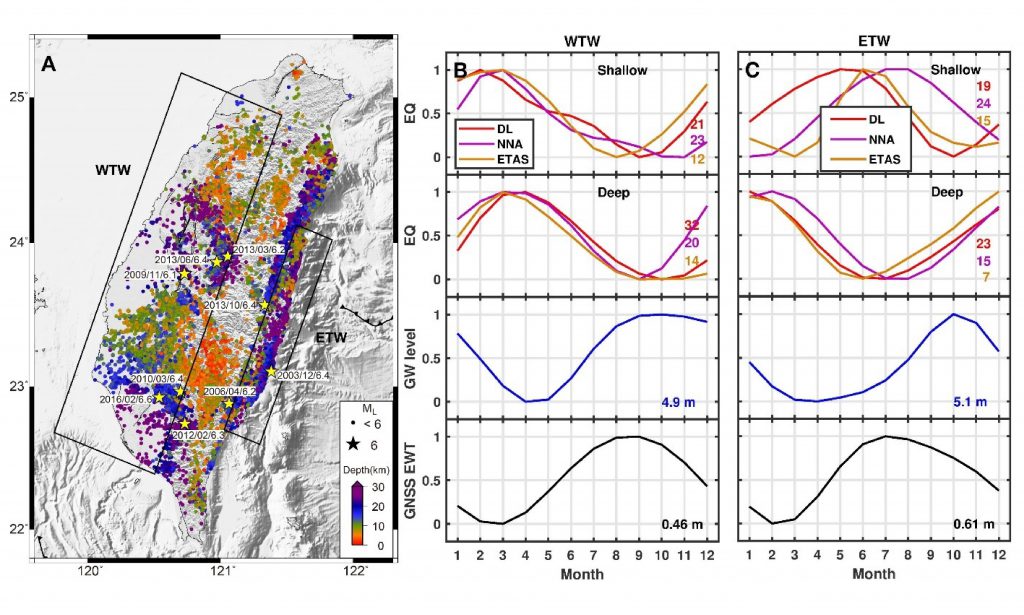Delineation of physical factors that contribute to earthquake triggering is a challenging issue in seismology. We analyze hydrological modulation of seismicity in Taiwan using groundwater level data and GNSS time series. In western Taiwan, the seismicity rate reaches peak levels in February-April and drops to its lowest values in July-September, exhibiting a direct correlation with annual water unloading. The elastic hydrological load cycle may be the primary driving mechanism for the observed synchronized modulation of earthquakes, as also evidenced by deep earthquakes in eastern Taiwan. However, shallow earthquakes in eastern Taiwan (<18 km) are anti-correlated with water unloading, which is not well explained by either hydrological loading, fluid transport or pore pressure changes, and suggests other time-dependent processes. The moderate correlation between stacked monthly trends of large historic earthquakes and present-day seismicity implies a modestly higher seismic hazard during the time of low annual hydrological loading. The research was published in the Science Advances.
Article Link: https://advances.sciencemag.org/content/7/16/eabf7282.full

